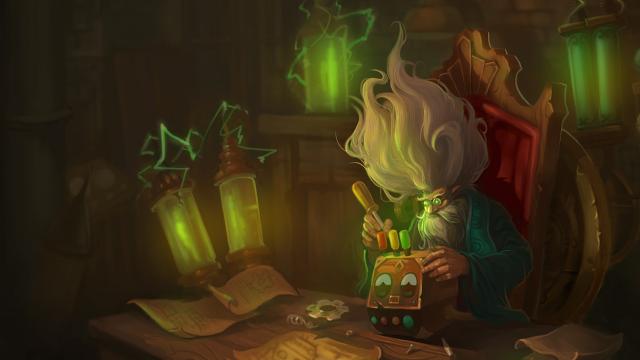A frequent topic of discussion in the League of Legends community is: who, exactly, is Riot incessantly tweaking and updating its game for? Does the developer prioritise the eSports stars, high-ranking amateurs, or more casual players? They don’t go to the very top of the food chain, it turns out. But they get close.
In a recent Q&A that was published on the League of Legends forums, balance designer Scarizard explained that Riot’s “philosophy” leads the company to balance its hugely popular competitive multiplayer game “towards players at the upper end of mastery, which we currently believe to be around platinum and above.” Platinum is the fourth highest rank one can achieve when playing League’s ranked mode:

But the order of the rankings doesn’t give the full picture here. Statistical breakdowns of League of Legends’ player-base, such as this one by League of Graphs, show that the majority of League players place in Silver or Bronze ranks (each ranking is broken down into several smaller divisions). Together, the Silver and Bronze levels make up almost 70% of League’s player-base — at least the part of it that plays in ranked. Platinum and above, meanwhile, accounts for a little more than 11.2 per cent.
Why would Riot balance its game towards such a small fraction of its player-base? Scarizard explains that the developers identify “core values” for assessing in-game performance that is “consistent as a baseline” to properly determine “what’s powerful in League”:
Deciding ‘who we balance for’ hasn’t been an easy task, but we quickly honed in on a few core values: competitive mindedness, mechanical aptitude, and strategic expertise. Mind you, these aren’t the only things that we think contribute to player skill (e.g. raw leadership and communication skills are important in any team game), but the above are ones we focus on when it comes to our broad-level balance. Players with these qualities are, on average, much more consistent as a baseline of what’s powerful in League. But what about pros? Certainly our professional community shatters these conditions (some more than others, as even professional players have their strengths and weaknesses), but we don’t necessarily believe that the Fakers and Bjergsens of the world should be the standard that every player is held to. If that’s the case, how can we represent this spectrum most effectively?
They further qualify these core values based on players’ “foundational skills” — the raw material of understanding League in as much depth as is necessary to do well — and “optimization” — the ability to execute on these foundational skills effectively:
Let’s back up a step. Along the spiral path that is Mastery in League of Legends, you can divide it into two sections: foundational skills and optimization. To expand, foundational skills are the building blocks of strategy within League – knowing the why and how of objectives, understanding the nuances of proper itemization, manipulating the ever-important vision game, and executing against your team’s strategic composition are just a few examples. You can be stronger at some and weaker at others, but each is a crucial piece when it comes to putting together League’s sprawling strategic puzzle. By contrast, optimization is the fine-tuning and development of these skills – when to take an objective, what order to build your items, where to place or deny vision, the mechanical specifics of champion matchups, and so on. Optimization is necessary for players that have mastered the basics to gain subtle (but potent) edges against the opposition. Think of it like building muscle – foundational skills net you the strength, and optimization shows off your definition.
The game’s current ranking system might not be perfectly accurate, Scarizard admitted. But he maintained its the developer’s “best proxy to represent a player’s skill.” At the lower ranks of League, then, player’s grasp on the game is too slippery to use them as the primary source of design decisions when it comes to balancing and rebalancing the game:
This doesn’t mean we devalue the feedback from players below platinum – only that we’re acknowledging that a high amount of variance occurs in those tiers. Many factors are at play – is Master Yi overpowered if you’re able to dominate a game with him? Alternatively, did the enemy team lack the understanding to focus-fire or apply crowd control? With a more strategic use of map movement, item builds and mechanical execution against Master Yi, more competitive players at a higher average skill help to paint a clearer picture of Master Yi’s power level, often revealing when the intended play against him is failing and needs us to intervene. Extreme outliers, be they pubstompers or pro-level pains will always be addressed, but more often than not our patch-to-patch changes are centered around this skill bracket.
The consistency of top-level players makes them more useful guinea pigs for League of Legends’ balancing team. But then how are we to interpret the “high amount of variance” that occurs in the game’s sub-Platinum tiers?
Read the rest of Scarizard’s Q&A here.

Comments
One response to “Why Riot Tweaks League Of Legends To Make It Better For Its Best Players”
So we balace around the part of the player base that actually understands the game and won’t immediately run off and claim things are overpowered because they get stomped once in a while.
Don’t know why this would be a surprise to anyone.